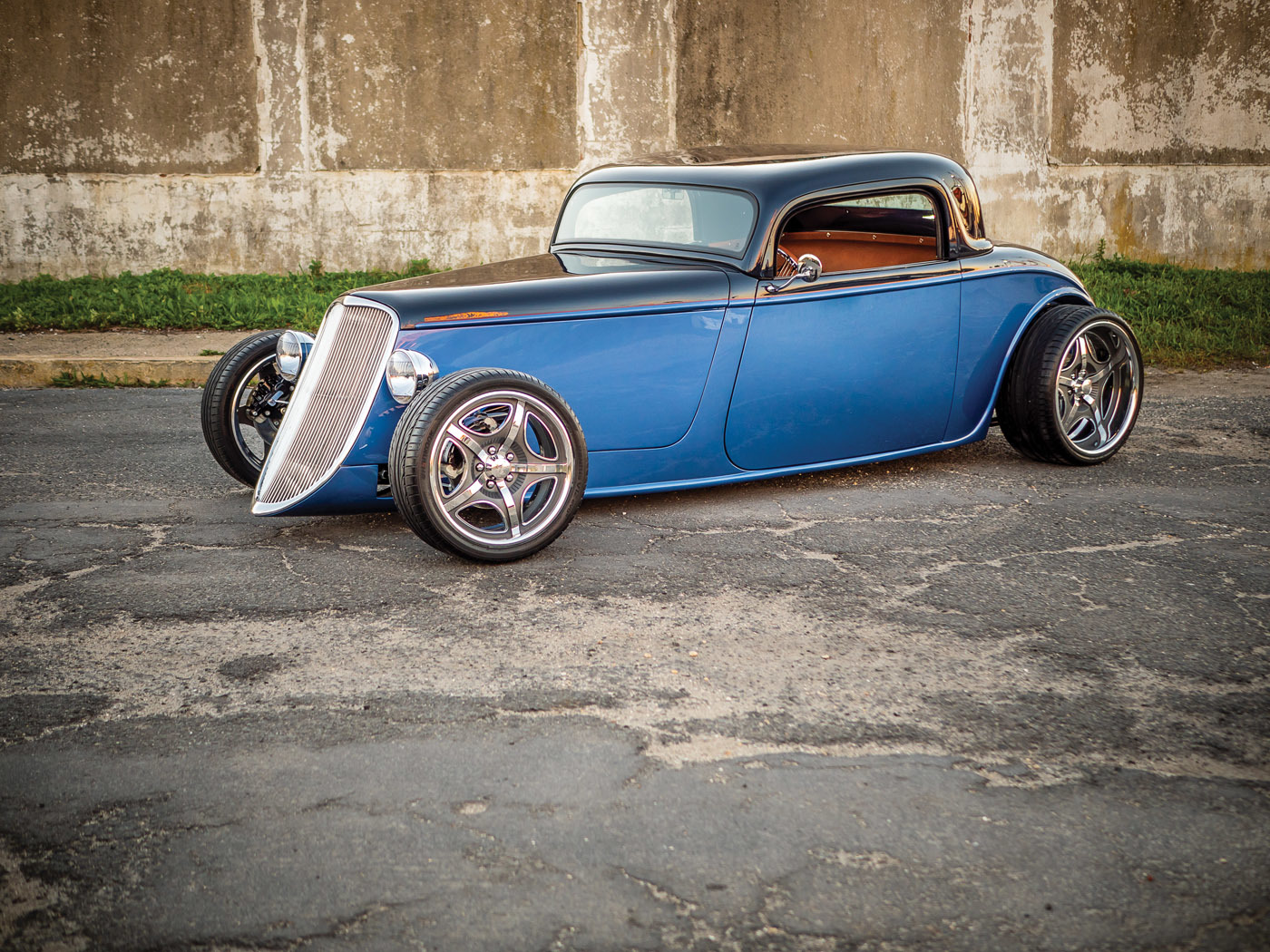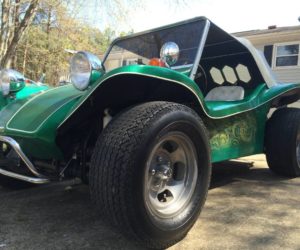
NHTSA issues proposed rulemaking on low vol. legislation
By Dean Larson
The most significant piece of legislation in our automotive niche, the Low Volume Motor Vehicle Manufacturers Act of 2015, has finally taken a step forward, as SEMA announced in late December the National Highway Traffic Safety Administration had finally issued its proposed rulemaking. The 118-page document, which can be seen here, clarifies the department’s interpretation and intended processes for implementing the low volume act.
Prior to enactment of the replica car law, the United States had just one system for regulating automobiles, which was established in the ’60s and designed for companies that mass-produce millions of vehicles. The lack of regulatory flexibility has prevented small businesses from manufacturing turn-key vehicles. The final regulations will allow low-volume automakers to sell up to 325 cars each year that resemble production vehicles manufactured at least 25 years ago. The U.S. Environmental Protection Agency and the California Air Resources Board have issued guidelines and regulations covering the engine packages to be installed in these replica vehicles. — Summary courtesy of SEMA
When the legislation was enacted in 2015, NHTSA, CARB and the EPA were given 12 months to draft their interpretation of the legislation and the relevant documenting processes. While CARB and the EPA eventually issued documents, NHTSA had not published its proposed guidelines, prompting SEMA to threaten legal action back in November of 2018.
With no regulations issued by October of 2019, SEMA made good on its promise to take legal action, filing a suit against the DOT in California appellate court mid month. In response to the suit, NHTSA finally issued its Notice of Proposed Rulemaking — a document detailing how the department would interpret the law, as well as relevant documenting processes — signed by NHTSA’s acting administrator James Owens on December 12.

We’ve combed through the legal jargon and also reached out to our friend Stuart Gosswein, Senior Director, Federal Government Affairs at SEMA, to get the scoop. And while the document was largely what we expected it to be, there are a few new developments and red flags we’ll have our eyes on in the coming weeks, starting with the word “resemble.”
See the initial language of the law was intentionally flexible when it said that a replica vehicle must resemble the body of a motor vehicle manufactured at least 25 years ago. But in reading NHTSA’s document, it appeared that the department was considering a fairly rigorous definition of “resemble.”
NHTSA is proposing a requirement that each replica vehicle have the same outward appearance or exterior as the original vehicle. This would mean that each replica must have the same body styling, shape, and exterior features as the original.
Deviations in the appearance of the exterior would be considered carefully. While reasonable allowances would be made to accommodate safety equipment, NHTSA would consider any unjustified exterior changes (e.g., not for safety) as potential indications that the vehicle is not a replica. If a replica manufacturer wants to make deviations to the exterior of the vehicle to accommodate safety features, it would be required to highlight those deviations for NHTSA’s consideration. — Replica Motor Vehicles; Vehicle Identification Number (VIN) Requirements; Manufacturer Identification; Certification (proposed December 12, 2019) (to be codified at C.F.R. pt 565, 566, 567 and 586).
Now that was a lot to get through, but you can see the potential implications of a strict stance here. NHTSA goes on to say that they feel that dimensions of height, length and width are available for most vehicles, and they’re proposing that replica vehicles should stick to these specifications, along with a similar outward appearance to the original vehicle. Taken to extremes, this suggests that your new replica ’33 Ford wouldn’t be the chop-top hot rod you envisioned, but instead a fully fendered, full height coupe in stock trim.

But thankfully Stuart Gosswein was quick to point out that CARB had already established a more agreeable definition of a replica vehicle, and that NHTSA would have to use an identical or compatible definition.
[A specially produced motor vehicle…] Resembles the body of a motor vehicle, on an overall 1:1 scale (+/- 10 percent) of original body lines, excluding roof configuration, ride height, trim attached to the body, fenders, running boards, grille, hood or hood lines, windows, and axle location, that had been commercially manufactured during consecutive model years, for sale not less than 25 years after the latest model year, with a production run of at least 50 units of a unique body style, before production of the current model year motor vehicle — CAL. CODE REGS. tit 13, § 2209.1 (2018)
Allowing for more flexibility, the CARB definition has us a lot more optimistic, but it’s important to note that both agencies are focused on consumer cars here, and not specialty or race vehicles. CARB’s 50-vehicle threshold, along with NHTSA’s explicit exclusion of “prototypes or concept vehicles that were never sold to consumers,” does limit the reach of the law quite a bit. Your Shelby Cobra is safe under this definition, but seemingly your Daytona Coupe wouldn’t be. If nothing else, it’s definitely a gray area.
On the other hand, it is encouraging to see that the required resemblance to original vehicles will only be skin deep in the coming legislation:
Because we interpret “body” not to include chassis or frame components, the replica would not need to have the same engine, transmission or drive axles, or drive train as the original vehicle. For example, a replica vehicle could be a battery electric vehicle, while the original vehicle was powered by an internal combustion engine — Replica Motor Vehicles; Vehicle Identification Number (VIN) Requirements; Manufacturer Identification; Certification (proposed December 12, 2019) (to be codified at C.F.R. pt 565, 566, 567 and 586).
The rest of the document is fairly straightforward, covering special VIN procedures, as well as documentation and reporting for low volume manufacturers. NHTSA talked at length on the topic of intellectual property rights, specifically in the realms of trade dress, logos and emblems, which is interesting as it falls far from the agency’s purpose. NHTSA may require that companies include a statement in their applications that their vehicle adheres to all applicable licensing, but it would not be NHTSA’s job to investigate licensing and trademarks.

Admittedly, we knew there were some complicated facets of the Low Volume Motor Vehicle Manufacturers Act when we first read the legislation back in 2015, and those elements never get easier when it comes to implementation. But progress by way of some low volume manufacturers actually starting production, is a foot in the door for all specialty vehicle manufacturers, and hope for a more expansive ruleset in the coming years. It's also encouraging to see NHTSA acknowledge that the vehicles covered in this act are unlikely to cause any significant environmental impacts, hopefully paving the way for expanded legislation soon. Coming into the public commenting period, SEMA is optimistic, and feels that NHTSA has come to workable document that just needs a little tweaking.
When the Notice of Proposed Rulemaking officially hits the Federal Register (which should be any day now), a 30-day public commenting period kicks off, where opinions on the proposed legislation are accepted.
SEMA will be submitting comments on behalf of the industry to urge the most favorable regulations. Additionally, NHTSA provides the following information for submitting comments:
You may submit comments to the docket number identified in the heading of this document by any of the following methods:
-
Federal eRulemaking Portal: Go to http://www.regulations.gov. Follow the online instructions for submitting comments.
-
Mail: Docket Management Facility: U.S. Department of Transportation, 1200 New Jersey Avenue S.E., West Building Ground Floor, Room W12-140, Washington, D.C. 20590-0001
Hand Delivery or Courier: 1200 New Jersey Avenue S.E., West Building Ground Floor, Room W12-140, between 9 a.m. and 5 p.m. ET, Monday through Friday, except Federal holidays.
-
Fax: 202-493-2251.
Regardless of how you submit your comments, please be sure to mention the docket number of this document.











Comments for: NHTSA Issues Proposed Rulemaking
comments powered by Disqus